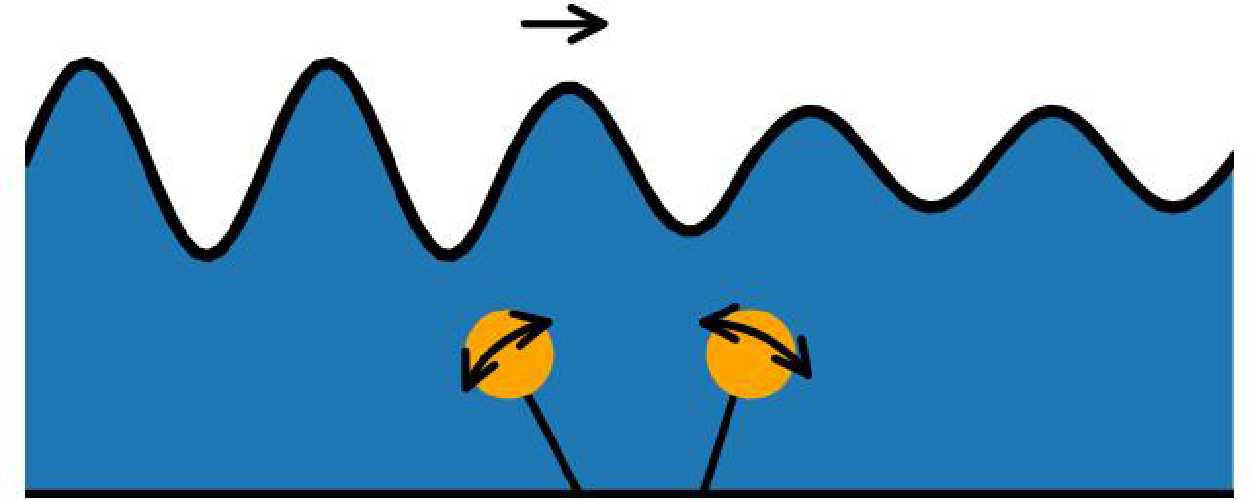No CrossRef data available.
Published online by Cambridge University Press: 16 June 2025

Waves propagating over oscillating periodic structures can be reflected and attenuated either by Bragg scattering or by local resonance. In this work, we focus on the interplay between surface gravity waves and submerged resonators, investigating the effect of the local resonance on wave propagation. The study is performed using a state of the art numerical simulation of the Navier–Stokes equation in two-dimensional form with free boundary and moving bodies. A volume of fluid interface technique is employed for tracking the free surface, and an immersed boundary method for the fluid–structure interaction. A wave maker is placed at one end of the flume and an absorbing beach at the other. The evolution in space of a monochromatic wave interacting with up to four resonators coupled only fluid mechanically is presented. We evaluate the efficiency of the system in terms of wave amplitude attenuation and energy transfers between the fluid and the solid phase. The results indicate that, near resonance conditions, both wave reflection and energy dissipation increase significantly. Conversely, far from resonance, waves can propagate through the system with minimal dissipation, even in the presence of numerous resonators. Moreover, when the time scale associated with the resonator’s restoring force is longer than the wave period, the resonators tend to follow the wave motion, oscillating with an amplitude comparable to that of the wave. In contrast, when the two time scales are similar, the resonator motion becomes amplified, resulting in stronger velocity gradients and enhanced viscous dissipation.